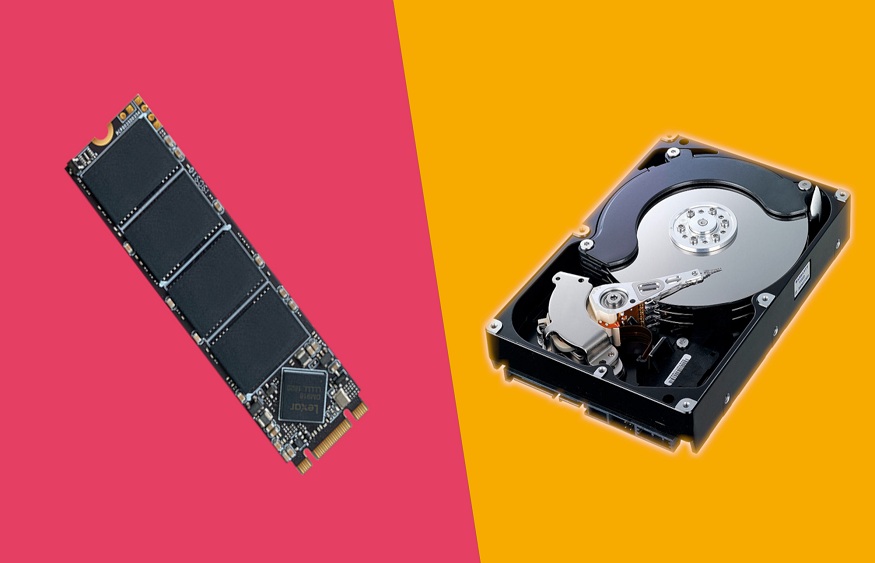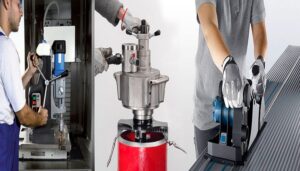HDD Which is better for you?
3 min read
What is the difference between SSDs and HDDs? SSDs and HDDs are similar in terms of physical characteristics, but store data very differently. Each type of disk has its advantages and disadvantages, and the choice of disk type will depend on how you use your computer. This guide will walk you through how each storage medium works and what they do for you.
Hard disk
The technology behind hard drives is well known and proven for a long time. Hard drives have been around for over 50 years, and their capacity is steadily increasing, while their size is gradually shrinking. Hard drives have spinning disks, or platters, on which data is read and written.
A hard drive comprising a magnetic platter and a movable arm.
HDDs have the advantage of being based on proven technology, being generally less expensive than SSDs, for a similar amount of storage. Currently, HDDs are available with more storage space than SSDs.
SSD
SSDs are based on much newer technology, but are advancing rapidly, with storage capacities increasing every year. SSDs work by storing in nonvolatile memory, which means the data won’t disappear when the computer shuts down.
Crucial SSD and motherboard
How NAND Technology Works
SSDs can be thought of as high-capacity USB flash drives. Indeed, they use the same basic technology: NAND, a type of flash memory. At the lowest level, floating-gate transistors register a charge (or lack of charge) to store data. The grids are laid out in a grid, itself organized in a block. The block size can vary, but each grid line is called a “page”.
An SSD controller performs several functions. In particular, it monitors the location of data.
Reading and writing
Whenever you ask your computer to fetch or update data, the SSD controller consults the address of the requested data and reads the state of charge.
Updating data is more complex for SSDs. All data in a block must be refreshed when any part of the data is updated. The data of the old block is copied to another block, the block is erased and the data is rewritten taking into account the modifications made to the new block.
When the disk is idle, a process called “garbage reclamation” is performed to ensure that the old block information is erased and data can be written back to it.
Another process, called TRIM, informs the SSD that the rewriting of certain data can be avoided when erasing blocks. Because the number of times a block can be rewritten is limited, this process is important because it prevents premature wear of the storage drive.
To prevent drive wear, an algorithm ensures that each block in the drive receives the same number of read/write operations. This process is called “wear balancing” and occurs automatically when the drive is running.
Because the read/write process requires moving data, SSDs usually have extra storage capacity. This is because a certain amount of the drive is never reported to the operating system and is not accessible to the user. This allows the reader to move and delete items without affecting overall storage capacity.
Disadvantages
Because SSDs are a newer technology, they are more expensive than HDDs. Although they are catching up, it can be very difficult to find very large capacity SSDs. The capacity of hard drives can be up to 2.5 times larger.
Learn more about SSDs and how they work.
Advantages
SSDs offer faster loading rates for games, apps, and movies. Thanks to their technology, SSDs are lighter and better able to withstand handling and drops. In addition, SSDs consume less power, which limits the risk of overheating the computer.
The difference between HDDs and SSDs is primarily the technology through which they store and retrieve data. The table below illustrates some of these differences.
Hard drives are less expensive and have larger capacities. SSDs, on the other hand, are faster, lighter, more durable, and consume less power. Your needs will define the storage medium that suits yo






